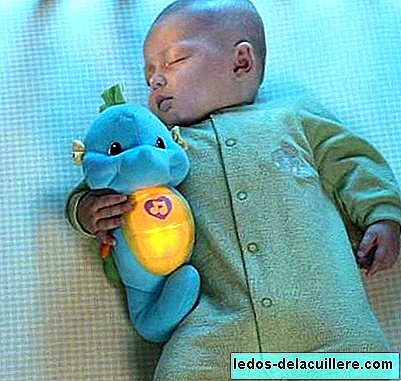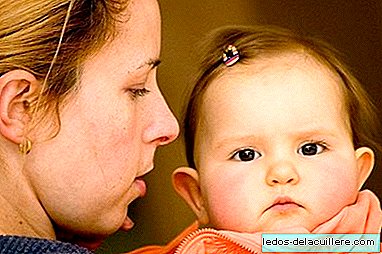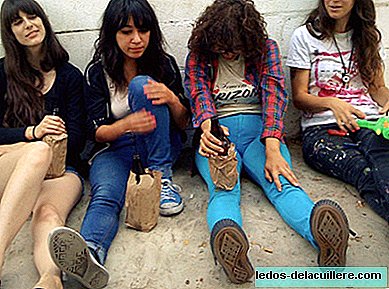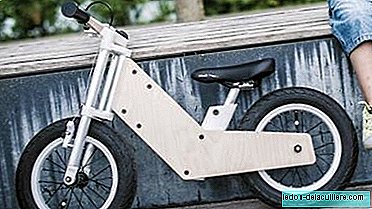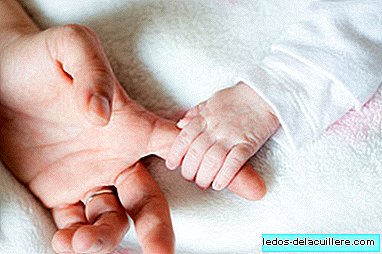
The Ministry of Health has just approved the financing of a drug called Spinraza that slows the progression of spinal muscular atrophy, helping to improve the quality of life of the patients who suffer from it, most of them children.
According to data from the AME Foundation, in our country one in 10,000 babies is born with spinal muscular atrophy, a genetic disease that attacks motor neurons found in the spinal cord, causing a progressive loss of muscle strength.
The only treatment available so far
Spinraza was approved by the European Medicines Agency in June last year and is the only treatment available to date to treat spinal muscular atrophy, the neurodegenerative disease of genetic origin that More deaths cause in children under two years.
Spain has become one of the first countries to approve its use, and this medicine - whose annual cost is 400,000 euros per patient - will be funded by the National Health System and will begin to be available from March 1.
The medicine will be administered in the hospital by means of a lumbar puncture for several times a year, and although it does not cure the disease it will help to stop the physical deterioration of the patient, improving his quality of life.However, there have already been three patients who have benefited from its use in our country. The first was Tiago, a three-year-old Galician boy who began receiving the drug at the end of last year, when the Xunta de Galicia approved its purchase for compassionate use.
In just two months of treatment, the little one experienced a remarkable improvement, slowing the progression of their disease and opening the door to hope to other patients with the same condition.
At the moment, treatment with Spinraza it will be offered only to those patients who register improvements in clinical trials, and that represent approximately half of the 400 cases of spinal muscular atrophy recorded in our country.
The families of those affected have received the news with great joy and hope that this is the first of a range of treatments that end up eradicating this terrible disease that mostly affects children, diagnosing 60 new cases every year.
Big steps
A year and a half ago we echoed another breakthrough for patients with spinal muscular atrophy: the creation of the world's first child exoskeleton developed by the Higher Council for Scientific Research (CSIC).

This robot, aimed at children between three and 14 years affected by spinal muscular atrophy, allows to support the trunk and mimic the functioning of the human muscle, giving the child the strength he needs to stand and walk.
Although it is expected that it may soon be marketed, for now The exoskeleton is being used in hospital settings, in the Sant Joan de Déu of Barcelona and in the Ramón y Cajal of Madrid.
That news was, without a doubt, a great revolution for children with spinal muscular atrophy since in addition to being able to be a walking aid, the robot also prevents the appearance of complications associated with the loss of mobility.
What is spinal muscular atrophy?
Spinal Muscular Atrophy is a neuromuscular disease, of a genetic nature, that It is manifested by a progressive loss of muscle strength due to the involvement of motor neurons of the spinal cord. This causes that the nerve impulses are not transmitted correctly to the muscles and that these atrophy, causing different symptoms depending on the type.
Type 1 is the most severe and is diagnosed within a few months after birth. It is characterized by a general weakness that implies lack of reflex reactions, difficulty breathing, swallowing and feeding.
Babies suffering from muscular atrophy of type 2 are usually diagnosed somewhat later as they may not present difficulties in swallowing and feeding, although they need help to remain seated, stand up and walk.
Type 3 is usually diagnosed after 18 months, although there are cases in which the diagnosis occurs in adolescence. These patients can stand up and walk, although they have trouble sitting and leaning forward.
Type 4 is the mildest manifestation of the disease and whose symptoms begin slowly after age 35, not usually affecting the muscles involved in swallowing and breathing.
This disease is hereditary and both parents must be carriers of the gene responsible, although the chances of transmitting it to children is 25%, independent in each new pregnancy.
Hopefully we will find ourselves at the beginning of the end of spinal muscular atrophy, and continue moving forward in the treatment research and marketing that fight against this type of diseases.
Via 20 Minutes
In Babies and More Diseases in babies and children, The first exoskeleton created in Spain that has allowed Álvaro, a boy with spinal muscular atrophy to walk, A father of three children with spinal muscular atrophy creates amazing costumes for children in wheelchairs


